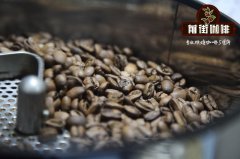Diseases of coffee trees at low elevations cause kernels to shrink gradually during fruit growth.

Professional coffee knowledge exchange more coffee bean information please follow the coffee workshop (Wechat official account cafe_style)
The disease occurred in the low altitude area, so that the kernel gradually shrank in the process of fruit growth, forming a black film, but the appearance of the fruit is very normal. This kind of fruit not only wastes the cost of manual harvest, but also reduces the yield and quality of raw beans. The damage rate can reach more than 80%, and the raw bean becomes a worthless defective bean. Is this problem caused by diseases and insect pests? Or the shadow of the heat? Caused by too much rainfall? Or nutritional deficiency? What if the nutritional deficiency is caused by the lack of that trace element?
In all coffee producing areas in the world, the damage caused by microorganisms is very serious, and disease control is a very important work in coffee garden management. If the disease is not well controlled, the yield and quality will be affected. The main diseases in Taiwan are coffee leaf rust (Leaf Rust, LR), coffee anthracnose (Coffee Berry Disease, CBD), brown leaf disease. The occurrence of the disease varies according to the altitude. Basically, the temperature in the mountain area is relatively cool and cloudy, the damage of coffee leaf rust is very serious, and the damage of coffee anthracnose is relatively mild; with high flat temperature, coffee anthracnose is quite common, and the damage is very serious. And the shadow to the quality of coffee beans, not only make coffee beans into defective beans, brewing out of the coffee taste muddy and with a bad smell.
In the past, coffee cultivation would solve the management of bark beetle diseases and insect pests through the following methods. First, pesticides, which is a conventional method of killing insects, but pesticides are more harmful to the environment. (insecticide killing is no longer advocated); second, people do manual testing by themselves, which is done by growers to detect coffee trees one by one, but this method is more difficult to implement; third, wasps control, through wasps to kill bark beetle adults and hatch larvae on bark beetles, while wasp larvae kill beetle larvae repeatedly to kill insects.
Infate,F. The professors selected 15 hectares of land and divided it into three plots A, B and C, each with 20 spots and 5 coffee trees (some of these coffee trees had diseases and insect pests and some did not). By randomly taking samples (including coffee branches, coffee beans and tree trunks) and using attractants and preservatives, the experimental data show that the two insecticides can kill bark beetles. But it is difficult to apply to the planting of commercial planning on a large scale. This experiment is based on Arabica coffee, but in the course of the experiment, it was found that Robusta coffee was more easily affected by bark beetle diseases and insects.
END
Important Notice :
前街咖啡 FrontStreet Coffee has moved to new addredd:
FrontStreet Coffee Address: 315,Donghua East Road,GuangZhou
Tel:020 38364473
- Prev

When buying coffee saplings, do not buy from unknown sources, which can cause insect pests and infections in coffee trees.
Professional coffee knowledge exchange more coffee bean information Please follow the coffee workshop (official Wechat account cafe_style) although at present there is no sign of coffee fruit beetles in coffee gardens in Taiwan, because in recent years some people have imported undried coffee fruits from abroad for breeding purposes. If fruit with worms is introduced, these worms will spread everywhere, and I am afraid that in Taiwan
- Next

Main ingredients, protein, caffeine, chlorogenic acid and amino acids of coffee roasted raw beans
Professional coffee knowledge exchange more coffee bean information Please pay attention to coffee workshop (Wechat official account cafe_style) beans refer to coffee, the main ingredients of raw beans, protein, oligosaccharides, caffeine, chlorogenic acid, amino acids and other chemical changes caused by heat roasting, resulting in coffee beans very unique color, bitterness, rustic, sour and texture of these ingredients
Related
- Beginners will see the "Coffee pull flower" guide!
- What is the difference between ice blog purified milk and ordinary milk coffee?
- Why is the Philippines the largest producer of crops in Liberia?
- For coffee extraction, should the fine powder be retained?
- How does extracted espresso fill pressed powder? How much strength does it take to press the powder?
- How to make jasmine cold extract coffee? Is the jasmine + latte good?
- Will this little toy really make the coffee taste better? How does Lily Drip affect coffee extraction?
- Will the action of slapping the filter cup also affect coffee extraction?
- What's the difference between powder-to-water ratio and powder-to-liquid ratio?
- What is the Ethiopian local species? What does it have to do with Heirloom native species?

